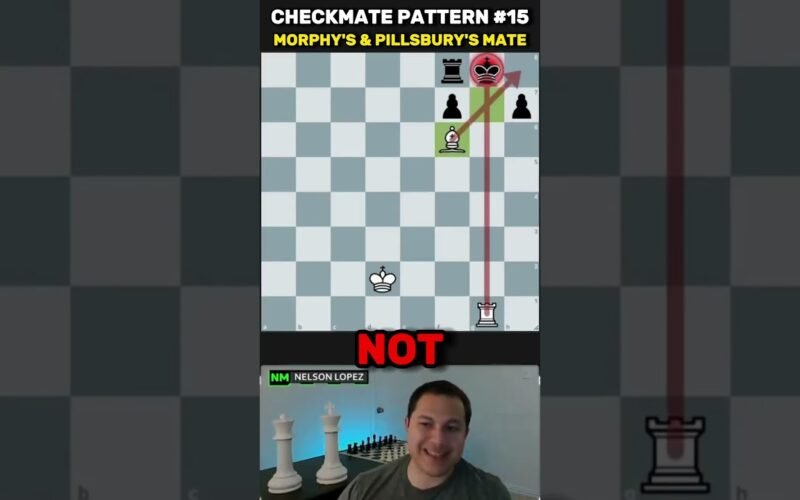🍒 Most students gain 200+ points in months:
https://chessvibescourses.thinkific.com/courses/from-1000-to-1500
🐙 Play Chess Here:
https://www.chess.com/membership?ref_id=5885046
🚂 Merch: https://Chessvibes.shop
Links are affiliate links and help support the Chess Vibes channel via a commission.
Morphy’s Mate and Pillsbury’s Mate are two famous checkmate patterns named after the chess players who first used them in famous games.
Morphy’s Mate is a checkmate pattern that was first used by Paul Morphy, one of the greatest chess players of all time, in a game against the Duke of Brunswick and Count Isouard in 1858. In this game, Morphy executed a stunning mate with a knight sacrifice, known as Morphy’s Mate. The pattern involves sacrificing a knight to open up the opponent’s king and then using the queen and rook to deliver checkmate. The key to this pattern is to use the knight sacrifice to force the king to a vulnerable square where it can be attacked by the queen and rook.
Pillsbury’s Mate is another famous checkmate pattern that was first used by Harry Nelson Pillsbury, an American chess player, in a game against Emanuel Lasker, the World Chess Champion, in 1895. In this game, Pillsbury executed a beautiful mate with two bishops, known as Pillsbury’s Mate. The pattern involves using two bishops to control important squares around the opponent’s king, and then using a rook to deliver checkmate. The key to this pattern is to use the bishops to create a “box” around the opponent’s king, making it impossible for the king to escape.
Both Morphy’s Mate and Pillsbury’s Mate are considered to be some of the most beautiful and elegant checkmate patterns in chess history. They are also important examples of the power of sacrifice in chess, showing how sacrificing a piece can lead to a decisive advantage and ultimately a winning position. Learning these checkmate patterns can help improve your chess skills and add some flair to your games.

